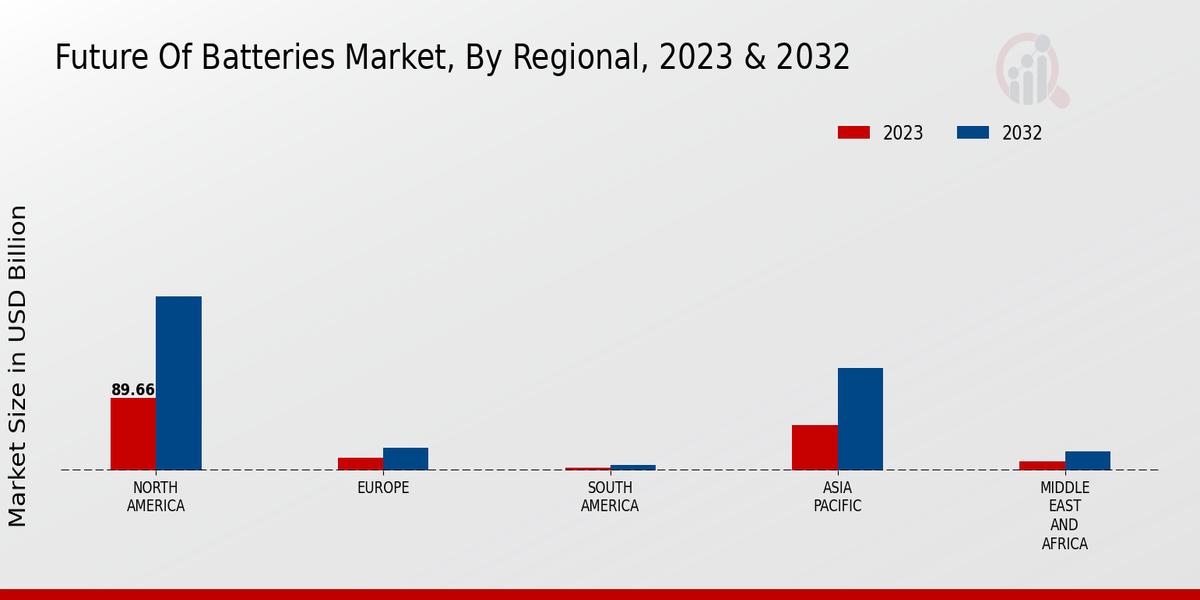Market Growth Projections
The Global Future Of Batteries Market Industry is projected to witness substantial growth in the coming years. In 2024, the market is valued at 209.2 USD Billion, with expectations to reach 580.5 USD Billion by 2035. This trajectory indicates a compound annual growth rate (CAGR) of 9.72% from 2025 to 2035. Such growth is driven by various factors, including the rising demand for electric vehicles, advancements in battery technology, and the integration of renewable energy sources. The market dynamics suggest a robust future for battery technologies, with significant implications for industries reliant on energy storage solutions.
Advancements in Battery Technology
Technological innovations are a key driver in the Global Future Of Batteries Market Industry. Developments in solid-state batteries, lithium-sulfur batteries, and other advanced chemistries are enhancing energy density, safety, and longevity. These advancements not only improve the performance of batteries but also reduce costs, making them more accessible for various applications. For instance, solid-state batteries are anticipated to revolutionize the market by offering higher energy densities compared to traditional lithium-ion batteries. As these technologies mature, they are likely to attract significant investment, further propelling the market's growth and enabling a broader range of applications across sectors.
Government Initiatives and Policies
Government initiatives and policies are shaping the landscape of the Global Future Of Batteries Market Industry. Many countries are implementing policies aimed at promoting battery production and usage, particularly in the context of renewable energy and electric vehicles. For example, subsidies for battery manufacturing and research grants for innovative technologies are becoming more common. These supportive measures not only stimulate market growth but also encourage domestic production, reducing reliance on imports. As governments prioritize energy independence and sustainability, the regulatory environment is expected to become increasingly favorable for battery manufacturers, further driving market expansion.
Growing Consumer Electronics Market
The Global Future Of Batteries Market Industry is also bolstered by the burgeoning consumer electronics market. With the proliferation of smartphones, laptops, and wearable devices, the demand for efficient and long-lasting batteries is at an all-time high. Manufacturers are continually seeking to enhance battery performance to meet consumer expectations for longer usage times and faster charging capabilities. This trend is expected to sustain the growth of the battery market, as innovations in battery technology are increasingly applied to consumer electronics. As this sector continues to evolve, it will likely contribute significantly to the overall demand for batteries.
Rising Demand for Electric Vehicles
The Global Future Of Batteries Market Industry is experiencing a surge in demand driven by the increasing adoption of electric vehicles (EVs). As governments worldwide implement stricter emissions regulations and provide incentives for EV purchases, the market for batteries is expected to expand significantly. In 2024, the market is valued at approximately 209.2 USD Billion, with projections indicating a growth trajectory that could see it reach 580.5 USD Billion by 2035. This growth reflects a compound annual growth rate (CAGR) of 9.72% from 2025 to 2035, underscoring the pivotal role of batteries in the transition to sustainable transportation.
Integration of Renewable Energy Sources
The integration of renewable energy sources is another significant driver for the Global Future Of Batteries Market Industry. As the world shifts towards sustainable energy solutions, batteries play a crucial role in energy storage systems that facilitate the use of solar and wind power. This trend is particularly evident in residential and commercial sectors, where battery storage systems are increasingly being deployed to manage energy supply and demand. The growing need for reliable energy storage solutions is expected to boost the battery market, as it supports grid stability and enhances the efficiency of renewable energy systems. Consequently, this integration is likely to contribute to the overall market growth.











